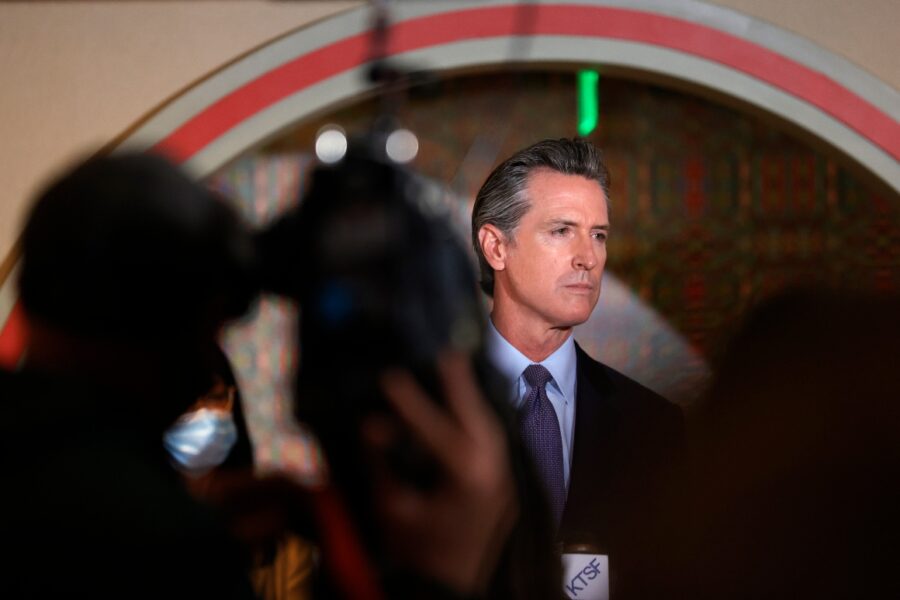California is heading toward a Newsom recall vote. What now?

OAKLAND, Calif. — Strap in, California.
Elections officials reported Monday that they’ve received enough valid signatures to trigger a recall vote on Gov. Gavin Newsom. That means America’s most populous state will hold just the second gubernatorial recall election in its history — a once-inconceivable outcome for deep-blue California’s Democratic governor. Here are some basic things to know:
What happened today? The California Secretary of State’s Office reported that counties have tallied about 1.62 million valid signatures. That’s comfortably above the roughly 1.5 million needed to trigger an election and doesn’t include another 140,000 or so uncounted signatures, which means the margin will grow.
What happens next? Technically the recall has not yet qualified. There remains a period for people who signed recall petitions to remove their signatures, although the chances of that blocking the recall are effectively nil. The Newsom team has no access to the names and information of the voters who signed the petitions — a group that is heavily Republican — and the governor’s team has conceded that they can’t reasonably pull back enough signatures to avert an election.
After that period, the state must analyze the cost of an election and lawmakers must weigh in on that financial analysis. The lieutenant governor would then call an election within the following 60 to 80 days, likely placing the recall election in November, and candidates will have 59 days to officially file.
Voters will answer two questions: whether to recall Newsom, and who should replace him. If Newsom gets a majority on the first one, the second is moot. If he falls short, look for a vote to splinter among numerous candidates.
How did we get here? The pandemic, stupid. A judge granted recall proponents more time to gather signatures since the coronavirus was impeding their efforts to collect signatures. That proved critical, ensuring recall backers were enlisting support as Newsom pulled the state into a winter lockdown and was revealed to have attended a top aide’s birthday dinner at an opulent restaurant.
Frustration over restrictions and closed schools and anger over Newsom’s evident hypocrisy jolted the campaign, drawing national interest and money and pushing the effort across the finish line.
Who are Newsom’s opponents? A growing field of Republicans will jockey to replace Newsom. So far, that includes former San Diego Mayor Kevin Faulconer, former Rep. Doug Ose and Newsom’s 2018 opponent, businessperson John Cox. Transgender celebrity and Olympian Caitlyn Jenner joined the fray last week.
Because there is no limit on recall candidates, you can expect more candidates to leap in. That could include Hollywood B-listers, wealthy self-funders and random candidates like former adult actress Mary Carey, who is running again after placing tenth in the 2003 recall. Candidates only need to be a registered voter and pay about $4,000 for a filing fee — or collect 7,000 signatures.
The most critical question hanging over the field is whether another Democrat will get in as a backstop should Newsom fail to survive the first recall question. Some Democrats believe it would be folly to not have a fallback since a Republican could take office with a plurality of the vote.
But Newsom and his team have moved aggressively to project party unity and stymie other Democrats from running, convinced that another entrant would drag down Newsom and make it easier for a Republican to claim the governorship.
Will Newsom survive? Signs currently point to yes. A recent statewide poll found Newsom had a positive job approval rating and that Californian voters would vote to keep him by a double-digit percentile margin. He wielded overwhelming support among Democrats — a critical buffer in a state where Democrats hold all the levers of power and outnumber registered Republicans by nearly five million voters — and led among independent voters who comprise about a quarter of the electorate. He can raise unlimited money from allies.
Time and trendlines are on Newsom’s side as the state emerges from its long battle with coronavirus. California currently has a relatively low infection rate and Newsom is aiming to broadly reopen the economy by June 15. If he succeeds and voters spend months enjoying relative normalcy before they vote, critics will be deprived of their heaviest cudgel.
But an enduring lesson of coronavirus-era politics is that things can change in an instant. Just ask Newsom, who early in the pandemic was enjoying a record approval rating and national plaudits for his assertive moves. Most large school districts have yet to commit to full-time reopening in the fall, and Republicans see that as a possible wedge issue. If the virus resurges and California must reimpose restrictions — or if Newsom commits another major unforced error — all bets could be off.
Go To Source
Author: POLITICO

